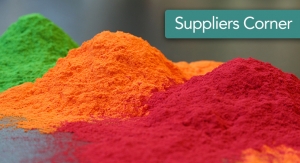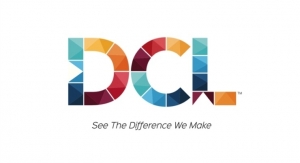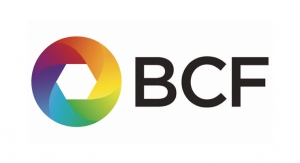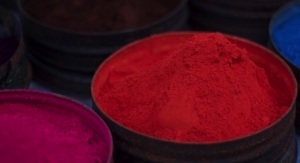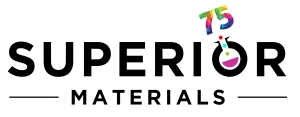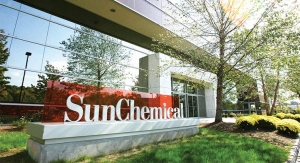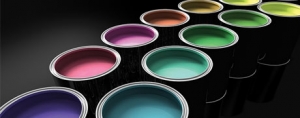Catherine Diamond, Associate Editor03.31.17
The resins market has continued to exhibit signs of growth over the last several years. Multiple factors have contributed to this market’s expansion, including the global health of the coatings market as a whole. According to Sheryl Southwell, president of Specialty Polymers, increased residential and commercial construction activity is a major driver of growth both domestically and globally.
“It seems like every mid-size to large city I visit has several multi-family housing developments under construction,” she said. “There is also increased activity in the packaging industry that is propelled by expanding food, beer and wine markets. Add to this the expectation of increased spending for repair and replacement of aging infrastructure.”
Globally, home and commercial construction is rising, something Arkema, Eric Dumain, North American commercial director for Coatings, said benefits not only the coatings industry, but the adhesives and sealants markets as well.
“The economy in general is growing stronger and we are seeing the ‘wealth effect’ directly influence the sale of coatings,” he said. The industrial coatings sector is also strengthening, he added.
“While the economy was softer last year, an increase in the sales of durable goods, appliances and home and garden supplies is positively impacting the sale of factory applied coatings and the materials that go into them.
“In protective coatings, we expect increased municipal spending on infrastructure to drive sales of traffic markings and coating materials used to refurbish metal and concrete structures,” he said.
Dumain added that the marine market is taking longer to recover, though he expects to see some growth in 2017 and beyond.
The water-based resin market has steadily grown and increased in the last ten years, according to Yasmin Sayed-Sweet, vice president of sales and marketing at Alberdingk Boley. “The main growth contributors are stricter VOC regulations and advancement in the WB resin technology to meet or exceed the performance needs,” she said.
Materials also saw a positive upswing in the global resins market, said Sun Chemical’s Michael T. Venturini, marketing director, Coatings, especially in sales of UV-curable, waterborne, and powder coating resins.
“The resins market remains highly competitive,” he said, “but trends dictated both by legislation and end consumers in the marketplace that focus on technical service, quality, performance and environmental considerations provide Sun Chemical tremendous opportunities for growth because of the strength of its research and development capabilities, backed by resin engineering from DIC, our parent company.”
For example, Venturini said, environmental regulations and social change for sustainable raw materials with less environmental impact are driving rapid change and innovation in all segments of the coatings market. The trend continues to move forward in Europe and the United States, but is quickly growing in Asia driven by China’s regulations for improved air quality and reduced VOC emissions.
“This has required paint producers to transition to powder, waterborne or other low-VOC technologies. The ever-growing importance of waterborne technology has created exciting innovation opportunities for resin manufacturers. Sun Chemical Advanced Materials will continue to work with DIC to focus our research and development efforts on expanding our product offerings for sustainable coatings.
“We will also work with DIC to provide resins with unique performance properties that are tailored specially for the end user’s application, such as: one pack primers for adhesion to polypropylene and TPO that allow for lightweighting and recyclability of automotive parts. In addition, we have developed a range of acrylic binders in both solvent- and water-based technologies that meet the stringent requirements of premium global automotive manufacturers,” Venturini said.
Balancing demands and costs
Customers in this market have required more and more low- or no-VOC resins in addition to increased performance and reduced costs – a tall order for any resins supplier. So, how do leading companies find the balance between rising demands and the inevitable rising costs associated with them? According to Specialty Polymers’ Southwell, meeting both performance and environmental goals is a subject that comes up repeatedly when her company’s sales and technical teams visit customers. She said that manufacturers are looking to Specialty Polymers as their resin supplier in order to help them exceed these goals. Cost is certainly part of the conversation, she said, as is the need for technical support, service and supply reliability.
“Communication with our customers is absolutely the key,” she said. “We have a significant number of custom-developed products which provides each customer the exact product they need.
Understanding the customer’s specific performance criteria and their cost goals is important. Our goal is to communicate early in the development process to understand what the potential opportunities are for balancing performance with anticipated costs. This communication continues throughout the relationship. Ongoing, open dialogue is important. Our philosophy is: no surprises!”
Alberdingk Boley’s Sayed-Sweet said that customers are indeed demanding low- or no-VOC resins to meet high-performance needs. “We are also seeing price pressure building at the same time raw material cost are increasing,” she said. In order to continually meet customer demand and to stay ahead of the competition, Sayed-Sweet said that innovation is the key. “Productivity improvements in manufacturing is also a continuous process,” she said.
Larry Schnieders, Global marketing manager, Paints & Coatings at Lubrizol, said that many customers are asking for products with greater durability.
“Some examples are for resins that maintain the aesthetics of the surface longer, protect the surface against corrosion longer, or don’t require recoating as frequently,” he said. “Customers are also demanding products that are easier to process, require less formulation, and are environmentally compliant in the countries where they do business.”
Achieving the balance between customer demand and price consideration is not a new challenge, Schnieders added. “Reaching the balance that works for both Lubrizol and our customers requires a high level of information sharing. Lubrizol strives to understand the outcome that customers attempt to achieve and collaborates with them to arrive at a solution that is beneficial to both parties.
Often, this approach requires the divulgence of more information than the past. Therefore, Lubrizol insists on secrecy agreements to ensure confidential information is protected. Once achieved, maintaining customer intimacy requires continuous efforts to keep pace with changing needs,” he said.
In addition to VOC requirements and durability, customers are also increasingly interested in UV-curable technologies as well as resins with self-cleaning and self-healing properties, according to Sun Chemical’s Venturini.
“The challenges Sun Chemical faces are the same as every other company—rapidly changing tastes and market needs, government regulations and consumer preferences,” Venturini said. “Sun Chemical’s philosophy to deliver ‘solutions, tailor made,’ shapes our relationships with our customers to learn and understand what drives their markets and helps us develop and bring them products that they specifically need to compete and succeed.”
Venturini added that Sun Chemical wants to continue being known as the company that is a partner to its customers. “To be able to achieve this, our customers have to know that we are here to help them with their problems. Backed with 17 research and development centers and the strength of DIC, our parent company, our unparalleled global presence allows for the delivery of local service and support that is customized to the markets it serves. Our coatings customers also can benefit from the fact that Sun Chemical offers a broad portfolio of both pigments and polymers,” he said.
As the stability of the resins market is solidified, customer demands are evolving. Dumain, of Arkema, said that just a few short months ago, he would have pointed to performance as customers’ primary demand. As the market strengthens, however, he said that customers are focused more on establishing a reliable, long-term, consistent supply.
“Strategic relationships between formulators and suppliers are more important than they have been in a really long time,” he said. “The greater demand, combined with tightness in key feedstock markets, make those relationships crucial to competing in the current marketplace.”
Dumain agreed that both performance and innovation remain important. “Customers expect solutions that will allow end users to be more productive and more profitable. Technologies that allow faster curing at lower material utilization with fewer energy inputs, all while carrying a smaller environmental footprint, will continue to be sought after. The importance of sustainability will more likely be driven by customer demands than as a response to government regulatory threats. Customers are still looking for sustainable solutions, but with technology advances outpacing regulatory demands in many cases, they can focus their efforts more on securing supply of the best technology answer for end-user problems,” he said.
Strategic relationships with formulators are very important to identify global end user customer needs, Dumain added. “If we can develop products that excel across geographies, our customers can leverage those products to make their operations more efficient and cost effective.”
Green technologies
Environmental regulations have become stricter across the globe, and for companies with international presence, meeting these regulations can be a challenge. Regulations vary by country and meeting them can be a costly endeavor. To rise to this multi-national challenge, resins companies frequently launch new eco-minded products.
One of the latest ‘green’ technologies that Sun Chemical has launched is a series of products under the WATERSOL line, said Venturini. A group of self-emulsifying acrylic resins developed by DIC for automotive interiors, WATERSOL water-based resins have been designed to deliver performance properties similar to solvent-based resins and demonstrate excellent corrosion resistance, high hardness, pigment dispersability and low-temperature film formation properties.
“We also recently launched WATERSOL WQS-364, a UV-curable water-based polymer for water-reducible coatings on plastics which contains a hydrophobic multi-functional methacrylate and urethane acrylate core surrounded by a hydrophilic group. This unique technology brings both excellent package stability and a level of chemical and solvent resistance to the cured films not seen with other UV-curable systems,” he said.
Southwell said that she is seeing a need for resins capable of meeting tough performance demands in ultra-low VOC formulations. “Aiming to minimize solvent load, formulators are looking for polymers providing the functionality of efficient film formation while maintaining high-performance properties,” she said. “One approach that our R&D team is developing to meet customers’ needs is an acrylic-based hybrid resin. This technique combines traditional acrylic polymer synthesis with other resin chemistries, enabling the hybrid resin to replace less environmentally friendly products.
Specialty Polymers has been on the forefront of innovation for nearly 50 years, and we continue to engineer solutions that help our customers meet strict environmental regulations.”
According to Schnieders, Lubrizol’s primary focus is to provide customers with resins that meet specific performance requirements.
“The challenge is meeting those performance requirements as well as VOC requirements,” he said. “We’re constantly exploring new materials that can meet this dynamic challenge. One outcome is a recently introduced acrylic-modified oil product for wood coatings. This product gives customers performance benefits when used as a sanding sealer, stain vehicle or blendable polymer for topcoats. This product delivers these benefits and can still be formulated to less than 50 grams/liter VOC (via US EPA Method 24). Additionally, this resin has 50% renewable content. Stricter environmental regulations have also driven our development of low VOC additives and humectants allowing customers to create formulations that meet environmental regulations.”
Because the demand for eco-friendly products has increased so dramatically in recent years, Arkema has introduced several new low-VOC products in just the last year.
One product, ENCOR 636, is a 100 percent acrylic latex for use in a wide range of low-VOC and APEO-free architectural coatings applications. This new resin was designed to help formulators simplify raw material inventory needs. “It is good for use in both typical and specialty coating formulations, is APEO free, provides excellent gloss development and adhesion across multiple wet and dry substrates, and exhibits good grain crack resistance. It was designed to offer the best possible balance between cost and performance in a low-VOC capable binder,” Dumain said.
The company has also introduced SYNAQUA 4804, an alkyd emulsion for low VOC architectural and light duty industrial maintenance formulations; and CELOCOR AF, a new ammonia-free opaque polymer for use in low odor interior or exterior architectural coatings with “excellent hiding power.”
New products
Leading resins manufacturers are frequently introducing new technologies to the market. What follows is information on these new innovations from select manufacturers, in their own words.
Arkema: ENCOR 167S latex for high performance caulks and sealants, a new binder that does not require any external plasticizers in the formulation. Product attributes include excellent exterior durability and adhesion, and it provides a range of additional benefits, including improved dirt pickup and mildew resistance.
REAFREE 6818 is a saturated carboxylated polyester hybrid coating resin suitable for the formulation of low temperature decorative and protective thermosetting powders in combination with epoxy resins. It offers good flow properties and high salt spray resistance, along with good mechanical and recoatability properties.
Lubrizol: Two recently introduced products are Aptalon W8060 and Carboset CR3090.
Aptalon W8060 is a water-borne, self-crosslinking polyurethane dispersion designed using patented Aptalon polyamide polyol technology. It is designed for high performance wood coatings applications. Aptalon W8060 is NMP, NEP, and APEO-free, which allows for globally compliant formulations. The patented Aptalon backbone chemistry gives the resin hydrolysis resistance, hardness, and chemical resistance that outperforms other water-borne polyurethane chemistries.
Carboset CR-3090 is an APEO and formaldehyde-free, styrene-acrylic copolymer emulsion designed for light to medium duty industrial coating applications. Carboset CR3090 is a water-borne resin technology that offers a single resin for formulating primers, topcoats and direct-to-metal, one-component coatings. It provides outstanding corrosion, chemical and stain resistance with superb adhesion to various metal substrates. The product is robust, allowing flexibility required when formulating coatings that require long lasting color and gloss retention.
Specialty Polymers: RayVace 684 has been developed for institutional interior latex applications that specify low odor and low VOC. This vinyl-acrylic resin can be formulated with little or no coalescing solvents and provides highly efficient pigment binding capability. Coatings formulated with RayVace 684 demonstrate outstanding scrub and chemical resistance.
RayKote 2020 is an acrylic-based hybrid resin designed for DTM applications. This acrylic hybrid dispersion works well for low VOC Systems and offers excellent corrosion resistance as well as adhesion to multiple metal substrates. It also has good gloss and color retention in QUV testing, so it can be used for both primer and topcoat applications.
Sun Chemical: Sun Chemical and DIC recently launched the self-healing properties of Acrylic WQU-339, which provides the ability for coatings to autonomously heal themselves from minor scratches—a major technological achievement in the coatings industry where we continue to lead.
Additionally, another DIC-based technology is Acrylic WML-350, a second-generation film forming resin for direct application and adhesion to polypropylene and PTO that does not require any additional adhesion promoters or additives. Sun Chemical delivers an evolving portfolio of resin technologies from DIC which combines unmatched convenience and technological innovation.
“It seems like every mid-size to large city I visit has several multi-family housing developments under construction,” she said. “There is also increased activity in the packaging industry that is propelled by expanding food, beer and wine markets. Add to this the expectation of increased spending for repair and replacement of aging infrastructure.”
Globally, home and commercial construction is rising, something Arkema, Eric Dumain, North American commercial director for Coatings, said benefits not only the coatings industry, but the adhesives and sealants markets as well.
“The economy in general is growing stronger and we are seeing the ‘wealth effect’ directly influence the sale of coatings,” he said. The industrial coatings sector is also strengthening, he added.
“While the economy was softer last year, an increase in the sales of durable goods, appliances and home and garden supplies is positively impacting the sale of factory applied coatings and the materials that go into them.
“In protective coatings, we expect increased municipal spending on infrastructure to drive sales of traffic markings and coating materials used to refurbish metal and concrete structures,” he said.
Dumain added that the marine market is taking longer to recover, though he expects to see some growth in 2017 and beyond.
The water-based resin market has steadily grown and increased in the last ten years, according to Yasmin Sayed-Sweet, vice president of sales and marketing at Alberdingk Boley. “The main growth contributors are stricter VOC regulations and advancement in the WB resin technology to meet or exceed the performance needs,” she said.
Materials also saw a positive upswing in the global resins market, said Sun Chemical’s Michael T. Venturini, marketing director, Coatings, especially in sales of UV-curable, waterborne, and powder coating resins.
“The resins market remains highly competitive,” he said, “but trends dictated both by legislation and end consumers in the marketplace that focus on technical service, quality, performance and environmental considerations provide Sun Chemical tremendous opportunities for growth because of the strength of its research and development capabilities, backed by resin engineering from DIC, our parent company.”
For example, Venturini said, environmental regulations and social change for sustainable raw materials with less environmental impact are driving rapid change and innovation in all segments of the coatings market. The trend continues to move forward in Europe and the United States, but is quickly growing in Asia driven by China’s regulations for improved air quality and reduced VOC emissions.
“This has required paint producers to transition to powder, waterborne or other low-VOC technologies. The ever-growing importance of waterborne technology has created exciting innovation opportunities for resin manufacturers. Sun Chemical Advanced Materials will continue to work with DIC to focus our research and development efforts on expanding our product offerings for sustainable coatings.
“We will also work with DIC to provide resins with unique performance properties that are tailored specially for the end user’s application, such as: one pack primers for adhesion to polypropylene and TPO that allow for lightweighting and recyclability of automotive parts. In addition, we have developed a range of acrylic binders in both solvent- and water-based technologies that meet the stringent requirements of premium global automotive manufacturers,” Venturini said.
Balancing demands and costs
Customers in this market have required more and more low- or no-VOC resins in addition to increased performance and reduced costs – a tall order for any resins supplier. So, how do leading companies find the balance between rising demands and the inevitable rising costs associated with them? According to Specialty Polymers’ Southwell, meeting both performance and environmental goals is a subject that comes up repeatedly when her company’s sales and technical teams visit customers. She said that manufacturers are looking to Specialty Polymers as their resin supplier in order to help them exceed these goals. Cost is certainly part of the conversation, she said, as is the need for technical support, service and supply reliability.
“Communication with our customers is absolutely the key,” she said. “We have a significant number of custom-developed products which provides each customer the exact product they need.
Understanding the customer’s specific performance criteria and their cost goals is important. Our goal is to communicate early in the development process to understand what the potential opportunities are for balancing performance with anticipated costs. This communication continues throughout the relationship. Ongoing, open dialogue is important. Our philosophy is: no surprises!”
Alberdingk Boley’s Sayed-Sweet said that customers are indeed demanding low- or no-VOC resins to meet high-performance needs. “We are also seeing price pressure building at the same time raw material cost are increasing,” she said. In order to continually meet customer demand and to stay ahead of the competition, Sayed-Sweet said that innovation is the key. “Productivity improvements in manufacturing is also a continuous process,” she said.
Larry Schnieders, Global marketing manager, Paints & Coatings at Lubrizol, said that many customers are asking for products with greater durability.
“Some examples are for resins that maintain the aesthetics of the surface longer, protect the surface against corrosion longer, or don’t require recoating as frequently,” he said. “Customers are also demanding products that are easier to process, require less formulation, and are environmentally compliant in the countries where they do business.”
Achieving the balance between customer demand and price consideration is not a new challenge, Schnieders added. “Reaching the balance that works for both Lubrizol and our customers requires a high level of information sharing. Lubrizol strives to understand the outcome that customers attempt to achieve and collaborates with them to arrive at a solution that is beneficial to both parties.
Often, this approach requires the divulgence of more information than the past. Therefore, Lubrizol insists on secrecy agreements to ensure confidential information is protected. Once achieved, maintaining customer intimacy requires continuous efforts to keep pace with changing needs,” he said.
In addition to VOC requirements and durability, customers are also increasingly interested in UV-curable technologies as well as resins with self-cleaning and self-healing properties, according to Sun Chemical’s Venturini.
“The challenges Sun Chemical faces are the same as every other company—rapidly changing tastes and market needs, government regulations and consumer preferences,” Venturini said. “Sun Chemical’s philosophy to deliver ‘solutions, tailor made,’ shapes our relationships with our customers to learn and understand what drives their markets and helps us develop and bring them products that they specifically need to compete and succeed.”
Venturini added that Sun Chemical wants to continue being known as the company that is a partner to its customers. “To be able to achieve this, our customers have to know that we are here to help them with their problems. Backed with 17 research and development centers and the strength of DIC, our parent company, our unparalleled global presence allows for the delivery of local service and support that is customized to the markets it serves. Our coatings customers also can benefit from the fact that Sun Chemical offers a broad portfolio of both pigments and polymers,” he said.
As the stability of the resins market is solidified, customer demands are evolving. Dumain, of Arkema, said that just a few short months ago, he would have pointed to performance as customers’ primary demand. As the market strengthens, however, he said that customers are focused more on establishing a reliable, long-term, consistent supply.
“Strategic relationships between formulators and suppliers are more important than they have been in a really long time,” he said. “The greater demand, combined with tightness in key feedstock markets, make those relationships crucial to competing in the current marketplace.”
Dumain agreed that both performance and innovation remain important. “Customers expect solutions that will allow end users to be more productive and more profitable. Technologies that allow faster curing at lower material utilization with fewer energy inputs, all while carrying a smaller environmental footprint, will continue to be sought after. The importance of sustainability will more likely be driven by customer demands than as a response to government regulatory threats. Customers are still looking for sustainable solutions, but with technology advances outpacing regulatory demands in many cases, they can focus their efforts more on securing supply of the best technology answer for end-user problems,” he said.
Strategic relationships with formulators are very important to identify global end user customer needs, Dumain added. “If we can develop products that excel across geographies, our customers can leverage those products to make their operations more efficient and cost effective.”
Green technologies
Environmental regulations have become stricter across the globe, and for companies with international presence, meeting these regulations can be a challenge. Regulations vary by country and meeting them can be a costly endeavor. To rise to this multi-national challenge, resins companies frequently launch new eco-minded products.
One of the latest ‘green’ technologies that Sun Chemical has launched is a series of products under the WATERSOL line, said Venturini. A group of self-emulsifying acrylic resins developed by DIC for automotive interiors, WATERSOL water-based resins have been designed to deliver performance properties similar to solvent-based resins and demonstrate excellent corrosion resistance, high hardness, pigment dispersability and low-temperature film formation properties.
“We also recently launched WATERSOL WQS-364, a UV-curable water-based polymer for water-reducible coatings on plastics which contains a hydrophobic multi-functional methacrylate and urethane acrylate core surrounded by a hydrophilic group. This unique technology brings both excellent package stability and a level of chemical and solvent resistance to the cured films not seen with other UV-curable systems,” he said.
Southwell said that she is seeing a need for resins capable of meeting tough performance demands in ultra-low VOC formulations. “Aiming to minimize solvent load, formulators are looking for polymers providing the functionality of efficient film formation while maintaining high-performance properties,” she said. “One approach that our R&D team is developing to meet customers’ needs is an acrylic-based hybrid resin. This technique combines traditional acrylic polymer synthesis with other resin chemistries, enabling the hybrid resin to replace less environmentally friendly products.
Specialty Polymers has been on the forefront of innovation for nearly 50 years, and we continue to engineer solutions that help our customers meet strict environmental regulations.”
According to Schnieders, Lubrizol’s primary focus is to provide customers with resins that meet specific performance requirements.
“The challenge is meeting those performance requirements as well as VOC requirements,” he said. “We’re constantly exploring new materials that can meet this dynamic challenge. One outcome is a recently introduced acrylic-modified oil product for wood coatings. This product gives customers performance benefits when used as a sanding sealer, stain vehicle or blendable polymer for topcoats. This product delivers these benefits and can still be formulated to less than 50 grams/liter VOC (via US EPA Method 24). Additionally, this resin has 50% renewable content. Stricter environmental regulations have also driven our development of low VOC additives and humectants allowing customers to create formulations that meet environmental regulations.”
Because the demand for eco-friendly products has increased so dramatically in recent years, Arkema has introduced several new low-VOC products in just the last year.
One product, ENCOR 636, is a 100 percent acrylic latex for use in a wide range of low-VOC and APEO-free architectural coatings applications. This new resin was designed to help formulators simplify raw material inventory needs. “It is good for use in both typical and specialty coating formulations, is APEO free, provides excellent gloss development and adhesion across multiple wet and dry substrates, and exhibits good grain crack resistance. It was designed to offer the best possible balance between cost and performance in a low-VOC capable binder,” Dumain said.
The company has also introduced SYNAQUA 4804, an alkyd emulsion for low VOC architectural and light duty industrial maintenance formulations; and CELOCOR AF, a new ammonia-free opaque polymer for use in low odor interior or exterior architectural coatings with “excellent hiding power.”
New products
Leading resins manufacturers are frequently introducing new technologies to the market. What follows is information on these new innovations from select manufacturers, in their own words.
Arkema: ENCOR 167S latex for high performance caulks and sealants, a new binder that does not require any external plasticizers in the formulation. Product attributes include excellent exterior durability and adhesion, and it provides a range of additional benefits, including improved dirt pickup and mildew resistance.
REAFREE 6818 is a saturated carboxylated polyester hybrid coating resin suitable for the formulation of low temperature decorative and protective thermosetting powders in combination with epoxy resins. It offers good flow properties and high salt spray resistance, along with good mechanical and recoatability properties.
Lubrizol: Two recently introduced products are Aptalon W8060 and Carboset CR3090.
Aptalon W8060 is a water-borne, self-crosslinking polyurethane dispersion designed using patented Aptalon polyamide polyol technology. It is designed for high performance wood coatings applications. Aptalon W8060 is NMP, NEP, and APEO-free, which allows for globally compliant formulations. The patented Aptalon backbone chemistry gives the resin hydrolysis resistance, hardness, and chemical resistance that outperforms other water-borne polyurethane chemistries.
Carboset CR-3090 is an APEO and formaldehyde-free, styrene-acrylic copolymer emulsion designed for light to medium duty industrial coating applications. Carboset CR3090 is a water-borne resin technology that offers a single resin for formulating primers, topcoats and direct-to-metal, one-component coatings. It provides outstanding corrosion, chemical and stain resistance with superb adhesion to various metal substrates. The product is robust, allowing flexibility required when formulating coatings that require long lasting color and gloss retention.
Specialty Polymers: RayVace 684 has been developed for institutional interior latex applications that specify low odor and low VOC. This vinyl-acrylic resin can be formulated with little or no coalescing solvents and provides highly efficient pigment binding capability. Coatings formulated with RayVace 684 demonstrate outstanding scrub and chemical resistance.
RayKote 2020 is an acrylic-based hybrid resin designed for DTM applications. This acrylic hybrid dispersion works well for low VOC Systems and offers excellent corrosion resistance as well as adhesion to multiple metal substrates. It also has good gloss and color retention in QUV testing, so it can be used for both primer and topcoat applications.
Sun Chemical: Sun Chemical and DIC recently launched the self-healing properties of Acrylic WQU-339, which provides the ability for coatings to autonomously heal themselves from minor scratches—a major technological achievement in the coatings industry where we continue to lead.
Additionally, another DIC-based technology is Acrylic WML-350, a second-generation film forming resin for direct application and adhesion to polypropylene and PTO that does not require any additional adhesion promoters or additives. Sun Chemical delivers an evolving portfolio of resin technologies from DIC which combines unmatched convenience and technological innovation.


